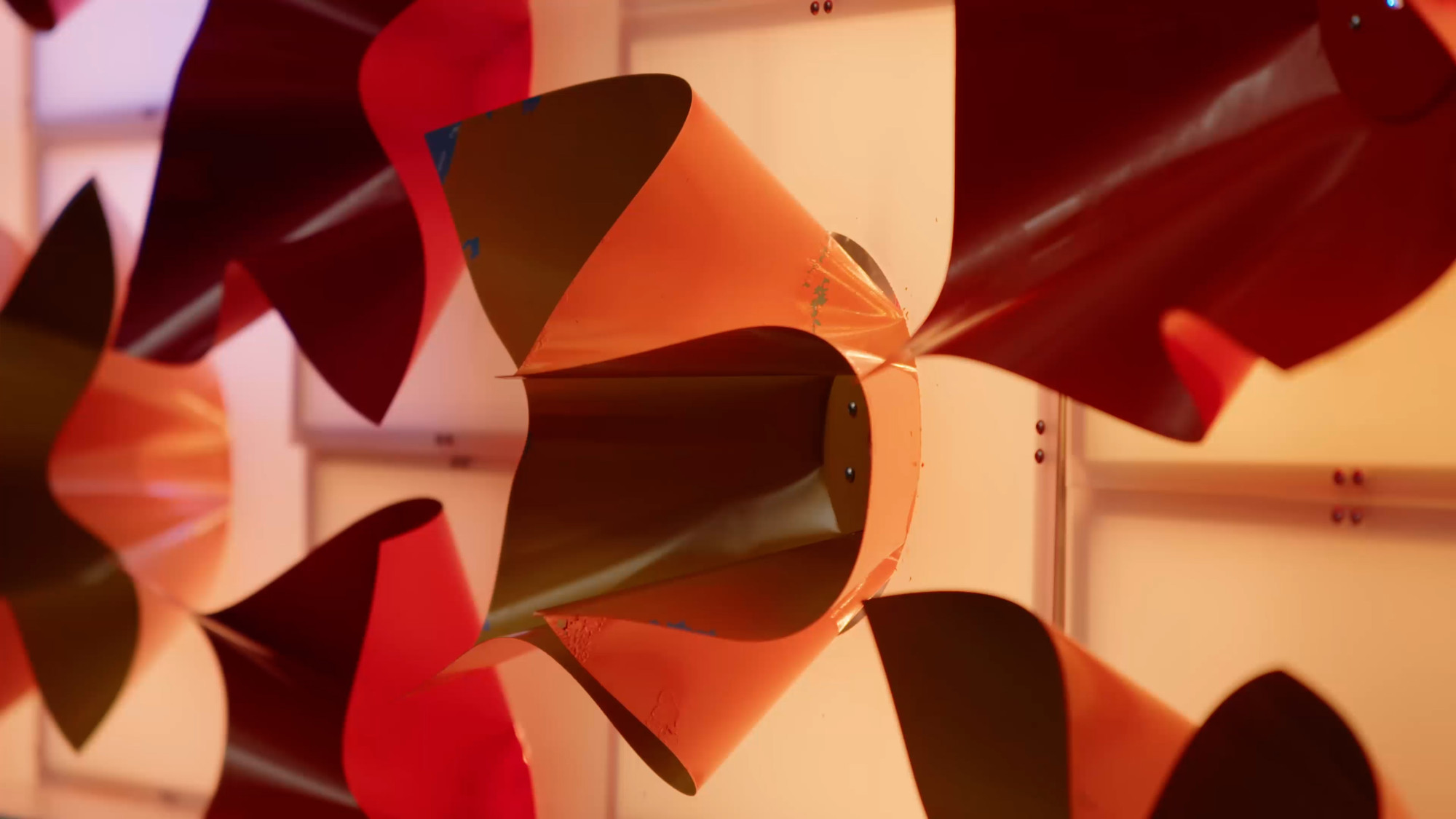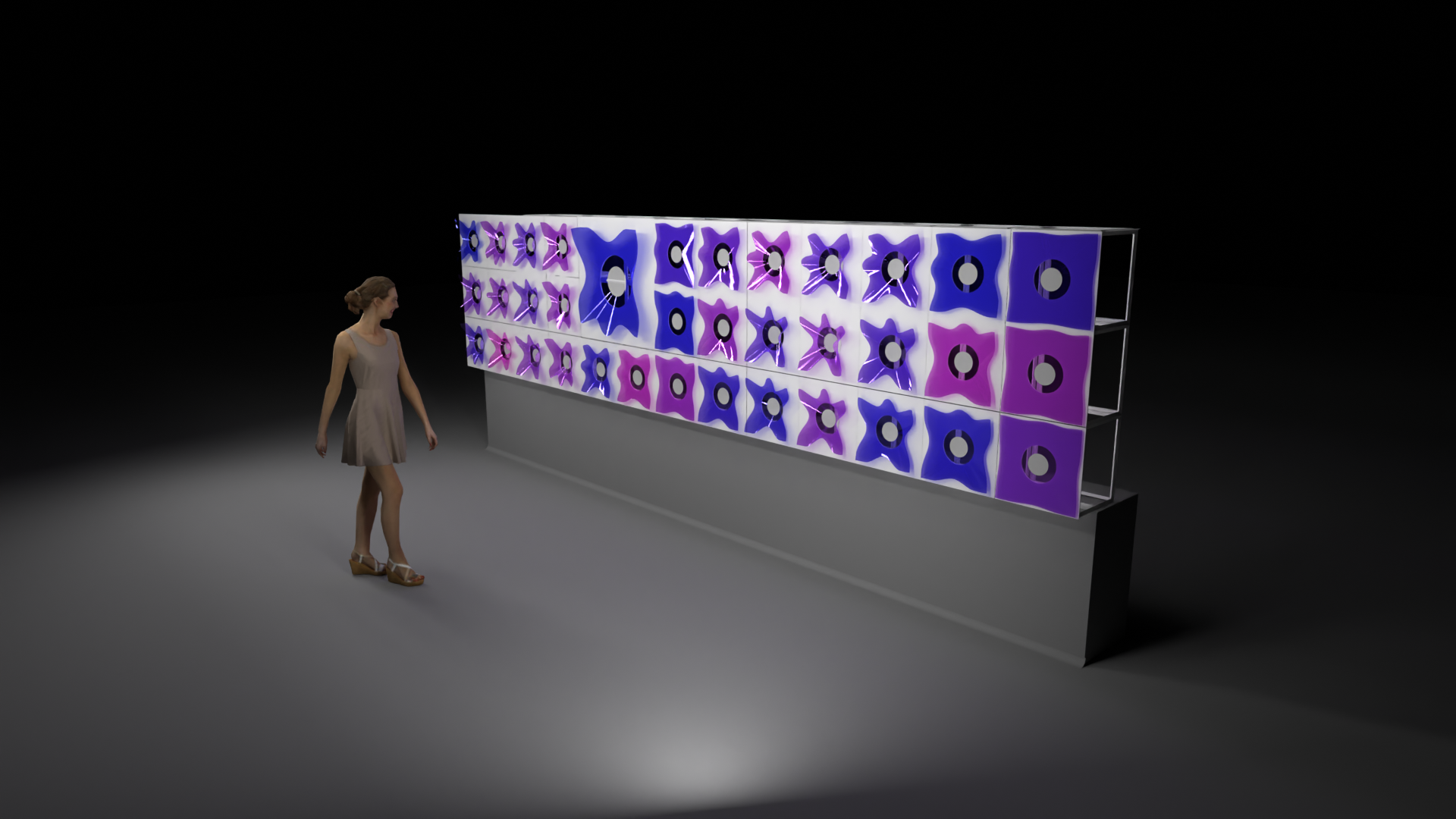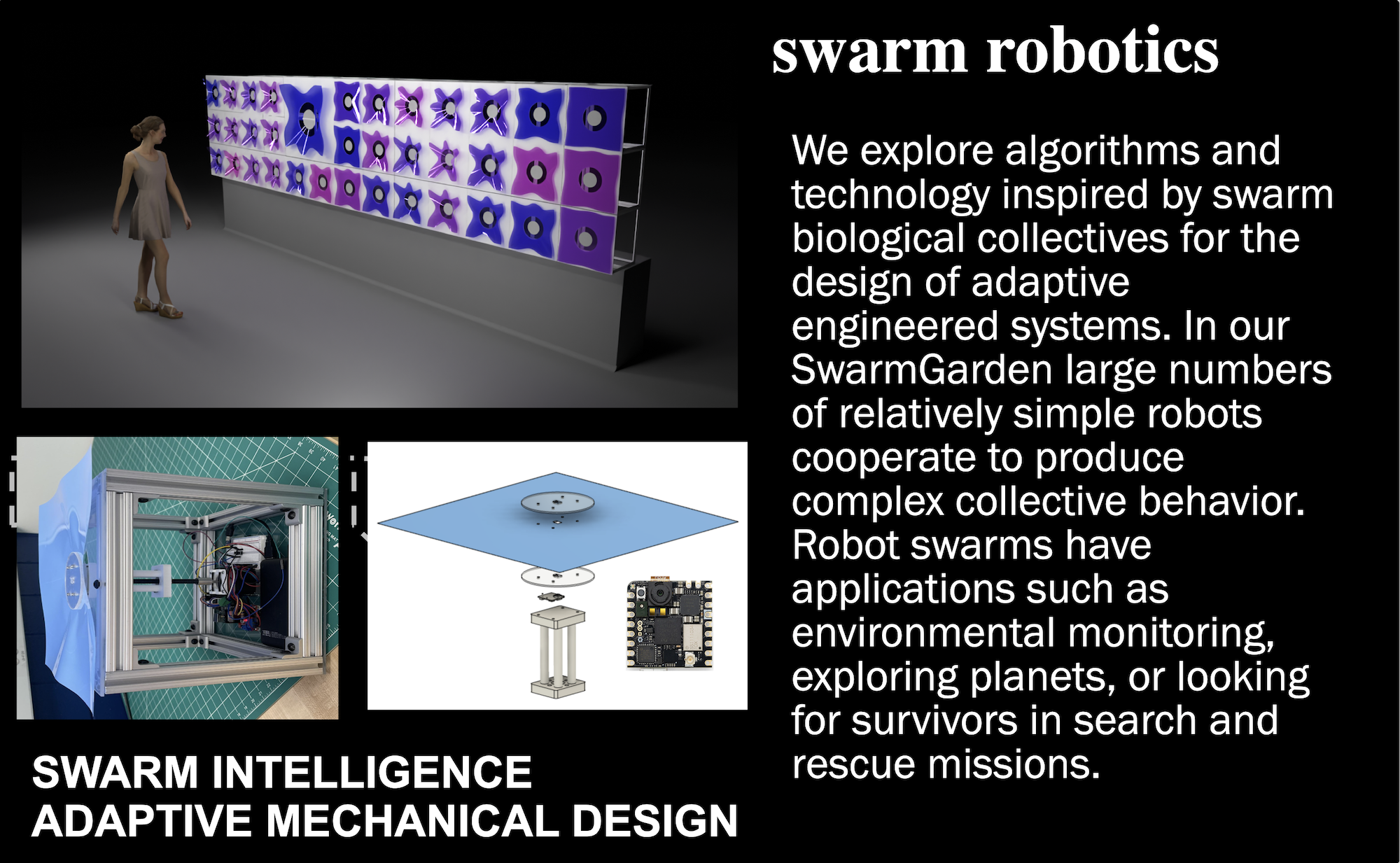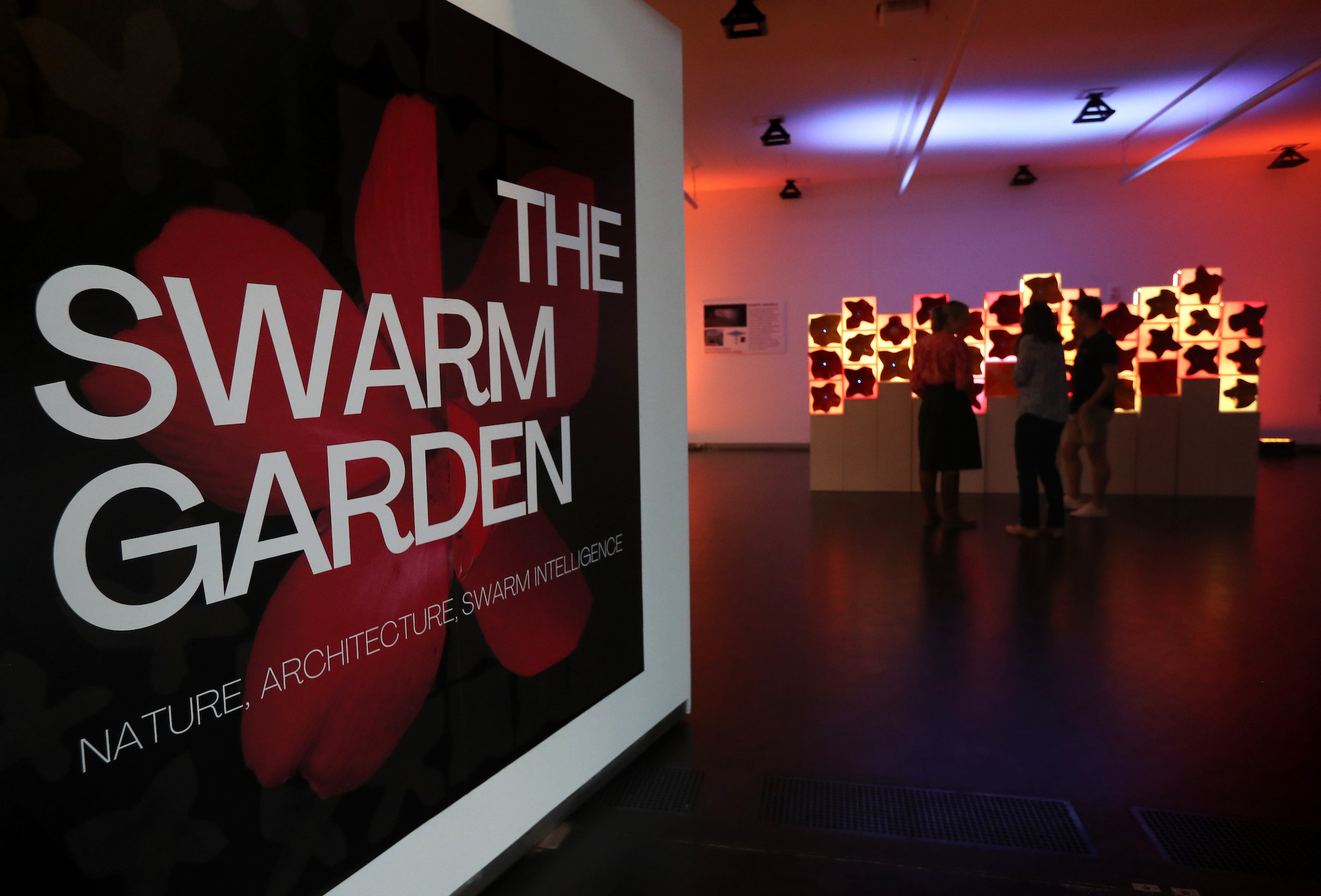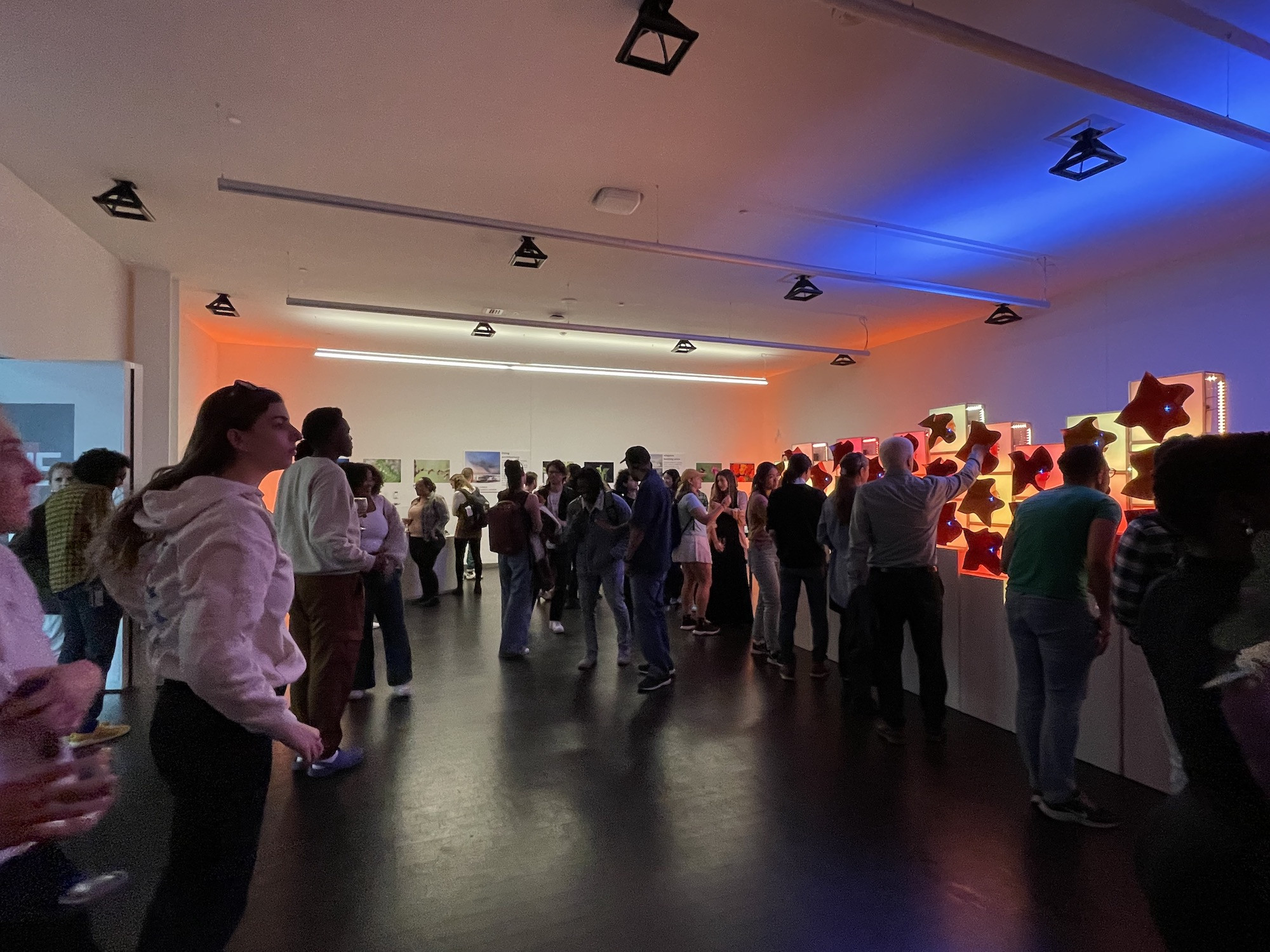In “Swarm Garden,” swarm intelligence meets adaptive architecture design to create a novel system that responds to people and changing environments: a robotic garden akin to living architectures such as beehives and plants. Bees and plant cells interact locally with each other, sensing and acting through complex networks to generate a swarm response. This system, composed of modules that react to light, motion, and the state of neighboring modules, utilizes microprocessors and wireless communication, enabling flat sheets within each module to buckle and deform efficiently under geometric confinement. This technology can be used to block and let in light to buildings. “Swarm Garden” explores how “living-like” architectures can create beautiful environments that invoke nature and promote health and well-being.
This project marks the first collaboration between Princeton University’s Radhika Nagpal, Norman R. Augustine Professor in the Departments of Mechanical and Aerospace Engineering and Computer Science, and the Self-Organizing Swarms and Robots research group, and Sigrid Adriaenssens, professor in the Department of Civil and Environmental Engineering, and the Form Finding Lab. Additional collaborators include postdocs Merihan Alhafnawi and Lucia Stein-Montalvo, graduate student Vicky Chow, and senior students Yenet D. Tafesse, Jad C. Bendarkawi, and Azariah Jones. Displayed in the CoLab at Princeton’s Lewis Arts complex on April 8–9, 2024, “Swarm Garden” received a positive reception and is the subject of an upcoming journal publication.
